The Epidemic > The Big Five > The Tommy John Twist > Premature Pronation
UPDATE: Great news for elbows! Dr. Glenn Fleisig of ASMI has come to agree with me that there is no (good) reason to teach pitchers to Point the Ball at Second Base and it may indeed be a BAD idea. As a result, Dr. Fleisig has advised USA Baseball to stop recommending that coaches teach pitchers to do it. Progress! Which is ironic given that Jeff Passan pooh-poohs the idea that Premature Pronation is bad in The Arm.

Vince Velasquez

Jeff Hoffman
Premature Pronation, or the pronation of the pitching forearm well before the Release Point and in the worst case, into, at, or through foot plant...

Riley Pint
...is a sadly common and in my opinion extremely dangerous piece of instruction. My understanding of the problem of premature pronation is one reason for my extremely accurate pitcher injury predictions.
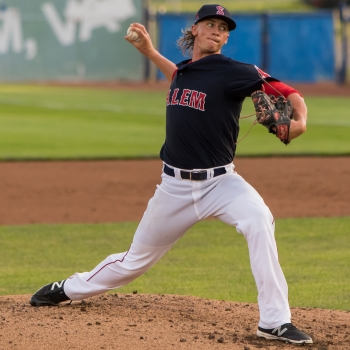
Michael Kopech
Recently, I have started referring to this movement as the Tommy John Twist.
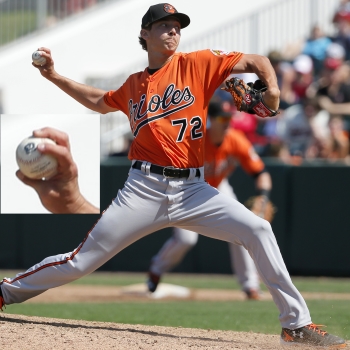
Hunter Harvey
The problem with Premature Pronation is that, as happens in the case of Hunter Harvey, pronating (turning the thumb down) into foot plant can limit the ability of the pitching arm to externally rotate, creating a Timing problem and, increasingly, what I call Flat Arm Syndrome.
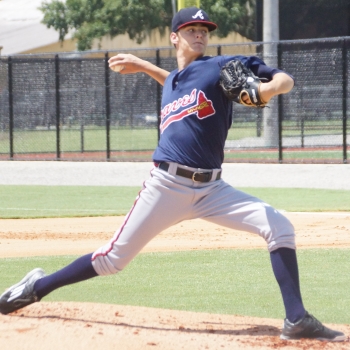
Ian Anderson
Tragically, and as I discuss in The Science Behind The Epidemic, this is by design.
Premature Pronation
Premature Pronation is generally the result of telling ballplayers and pitchers to Point the Ball at Second Base, a now-discredited cue.
It can also be the result of using cues like...
- Point the Ball Away from the Target
- Show the Ball to Center Field
In the picture below, notice how, at foot plant, Ivan Nova's pitching arm is pronated (thumb down) and flat while Mariano Rivera's arm is up and he is pointing the ball at third base.
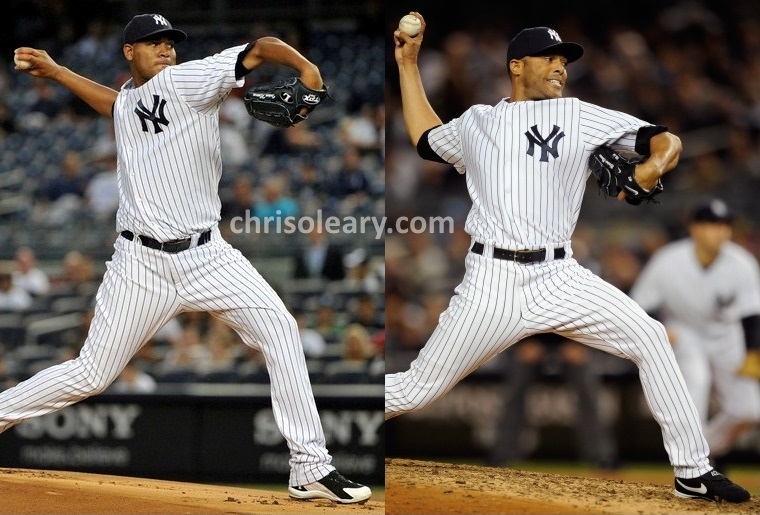
Ivan Nova and Mariano Rivera
The problem is that, as I discuss in my analysis of Jose Fernandez's pitching mechanics, Premature Pronation places the elbow, and sometimes also the shoulder, at risk.
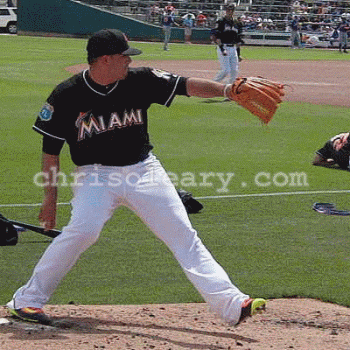
Jose Fernandez
In my experience, if the Pitching Arm Side forearm is in a position of pronation, and pointing the ball at second base, as the pitcher goes into, at, or in the worst case after Foot Plant, that can create a Timing problem.

Brandon McCarthy
That may also limit the ability of the muscles of the forearm to protect the UCL.

Walker Buehler
Premature Pronation: Pronation of the Pitching Arm Side forearm into, at, or in the worst case after Foot Plant.

Marco Gonzales
In my opinion, Premature Pronation goes a long way toward explaining the pitcher injury and Tommy John surgery epidemic.
Trust, But Verify
I first started diving into pitching mechanics in 2005. One of the things I did was go to a number of pitching clinics, held by high school coaches.
I hadn't studied pitching much, but I was a bit skeptical when one of the coaches told us how important it was to show the ball to center field when at the high-cocked position when throwing and pitching. After his presentation was finished, I went up to him and asked him for some more information about the show the ball to center field cue and his justification for teaching it. He replied that, if I checked, I'd see that was what great pitchers like Tom Seaver, Nolan Ryan, and Mariano Rivera did.
Not convinced that he was right, in large part because the position felt so unnatural when I tried doing it, I did something that he apparently never thought to do.
I checked.
As it turns out, at foot plant, Tom Seaver, Nolan Ryan, and Mariano Rivera didn't point the ball at second base.
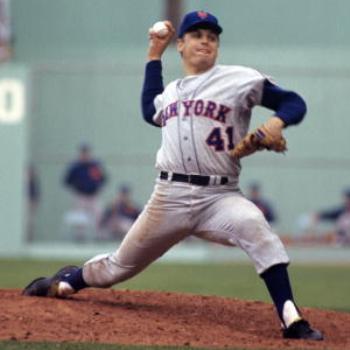
Tom Seaver

Nolan Ryan
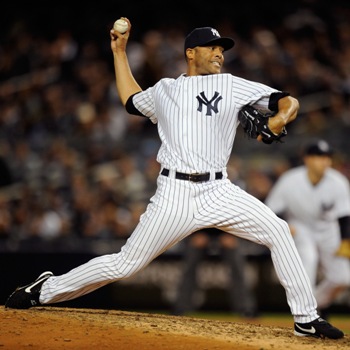
Mariano Rivera
Instead, they showed the ball to third base (first base for righties).
Proper Throwing Mechanics?
If you Google "proper throwing mechanics," the first result that comes up, for me at least, is a Baseball Factory coaching tip on throwing. The key teach in this clip is a saying that is fairly common, but comes in different forms across the country.
- Thumb to thigh, show it to the sky
- Snakebite
Playball.org, which is a joint venture of MLB and USA Baseball, teaches the same thing in their piece on the basics of the delivery and they teach it as...
- Point the Ball at Second Base
LittleLeague.org is another prominent organization that advocates this same basic in their throwing technique piece. They call it...
Other forms of this cue that I have heard include...
- Show the Ball to Center Field
- Point the Ball Away from the Target
- Cobra Position
- Put the can on the shelf
You can see people pushing this same basic idea all over Youtube.
All of those videos have massive bio-mechanical fails, especially when it comes to arm action and external rotation, but this one is probably the worst...
In terms of injurious movement patterns, I just stumbled across this video, which is the worst I've ever seen because it teaches a position that is sometimes referred to as the Power T and is the flaw the got Matt harvey's elbow and will eventually get his shoulder...
The problem is that, while all of these cues will likely increase a ballplayer's throwing velocity, they will also increase -- not decrease -- the risk of injury by overloading the arm.
This is NOT What Marshall Means by Pronation
I have long suspected that a large part of the problem is that people have heard the term pronation as being a good thing, and have tried to incorporate it into their teach, but have done so incorrectly.
I recently stumbled across something called the Pronation Drill that confirms my suspicions.

Pronation Drill
In the picture above, notice how the pitcher has pronated his forearm and is pointing the ball at second base.
Yes, that's pronation, but he's pronating prematurely; earlier than he is supposed to.
At that moment in time, he should be pointing the ball at third base or even home plate.
That goes against the conventional wisdom, but that is because the conventional wisdom has gotten the concept of pronation wrong; it teaches pitchers to pronate prematurely, which increases, not decreases, the risk of elbow and shoulder problems.
Injury Mechanism
How does Premature Pronation contribute to injury problems? I believe it does so in two ways.
Timing Problems
Studies of pitching mechanics have established that Timing problems like Flat Arm Syndrome increase the risk of elbow and shoulder problems. In my experience, and based on my studies of thousands of high speed video clips, Premature Pronation often causes Timing problems. By pronating prematurely, and often holding that prematurely pronated position for an extended period of time, pitchers delay the external rotation of their pitching arm and keep it from getting up to the Ready Position by the time the shoulders start rotating.
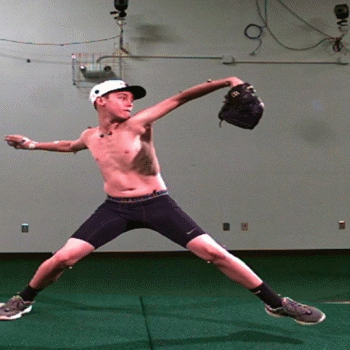
Premature Pronation
That is exactly what you see the clip above, which shows a young pitcher with a serious case of Premature Pronation; how Premature Pronation holds his arm in a position of Internal Rotation, and delays External Rotation, longer than it otherwise would. That is also what you see in the clip below of Jacob deGrom; as he goes into Foot Plant, his forearm pronates and his pitching arm reduces its rate of External Rotation.
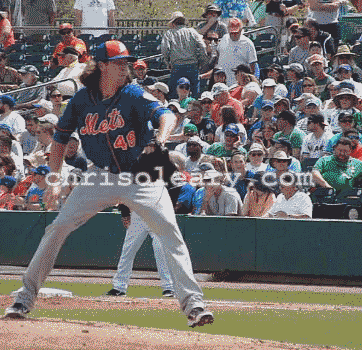
Jacob deGrom
You can see the same pattern, to an even larger degree, in the arm action of Jose Fernandez.
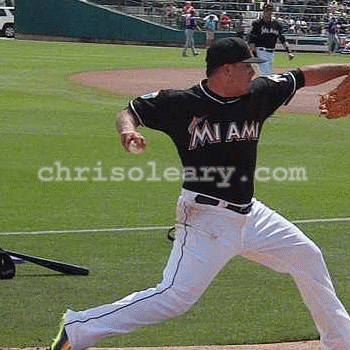
Jose Fernandez
Notice how Jose Fernandez pronates as he goes into foot plant and then holds that pronated position, and points the ball at second base, as his arm rotates up.
I would argue that his greater degree of Premature Pronation is why Jose Fernandez throws harder than Jacob deGrom but is also breaking down faster.
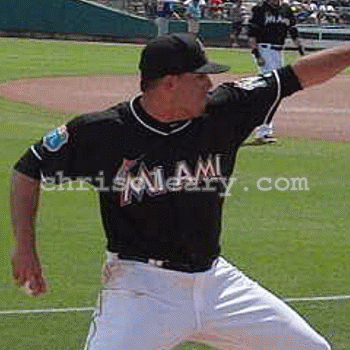
Jose Fernandez
As I discuss at length in The Science Behind The Epidemic, numerous studies demonstrate that this is problematic.
By Design
The truly depressing part of the epidemic is that the Timing problems that are getting so many elbows and shoulders are by design.
For example, Davis et al state the following their 2009 study...
We believe that the hand-on-top position initiates early shoulder abduction while delaying humeral external rotation because when the forearm is pronated, the humerus remains internally rotated. This causes the shoulder to abduct while delaying humeral external rotation.
That is a problem because, as Dr. Cynthia Labella found, delayed external rotation correlates with increased pain in young pitchers.
The pain group had greater internal shoulder rotation at the initiation of external rotation in the stride.
Inhibiting Sharing of the Load
Studies of the elbows of cadavers suggest that, during the pitching motion, the load on the elbow exceeds the strength of the Ulnar Collateral Ligament (UCL), the ligament that is replaced during Tommy John Surgery (TJS). Given that even pitchers with the most troubled injury histories are able to pitch for years before requiring TJS, that means that the load on the elbow isn't carried solely by the UCL.
Instead, something is helping to carry the load.
Dr. Mike Marshall theorized that structure is the Pronator Teres muscle, which passes over the UCL. More recent research suggests that the Flexor-Pronator Mass (FPM) -- a group of muscles that are used to flex the wrist and the fingers and pronate the forearm and that also pass over the UCL -- is actually the muscle group that is helping to take some of the load off the UCL and protect the elbow.
In essence, the load on the elbow is born by both the UCL and the FPM.
The role of the FPM in helping the UCL to protect the elbow is evidenced by the tendency of pitchers who require Tommy John Surgery to have problems with the muscles of the FPM in the years, months, or days before they require TJS. As the UCL starts to loosen up, more and more of the load is transferred to the FPM, overloading it.
One way to think about this is to think of towing a car using two ropes, one thick (the Ulnar Collateral Ligament) and one thin (the Flexor-Pronator Mass). Both ropes will perform fine as long as both are intact. However, suppose that the thicker rope was tied to the car in a position where it will rub against a sharp edge. Over time, the thicker rope will start to fray. Eventually, the thicker rope will fray to such a degree that it will no longer be able to bear most of the load, and the load will be transferred to the thinner rope, causing it to start to strain.
Major League Pitchers and Premature Pronation
In my 2012 analysis of Michael Pineda's pitching mechanics, I identified the way he shows the ball to center field as a problem.
You can see Premature Pronation in the arm actions of many current and former major league pitchers.

Jose Fernandez
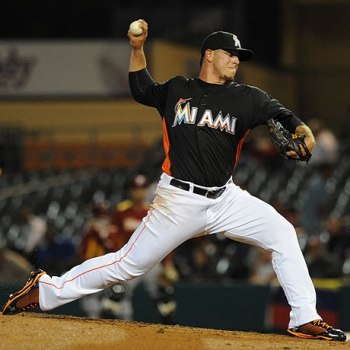
Jose Fernandez
Jose Fernandez of the Marlins is an example of a pitcher who does this and who I believe is having elbow problems as a result.
UPDATE 2015.08.08: Jose Fernandez is now having shoulder problems. As I explain in my piece on Jose Fernandez's pitching mechanics, I believe that is due to a combination of his Showing the Ball to Second Base and his Inverted L.

Cliff Lee
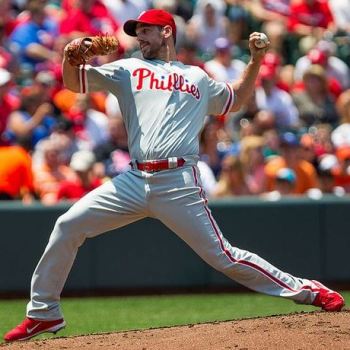
Cliff Lee
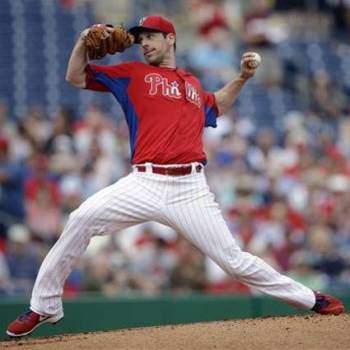
Cliff Lee
While I am generally a fan of Cliff Lee's pitching mechanics, I see signs of Premature Pronation, and I suspect that is contributing to his recent elbow problems. This problem is subtle, but more significant than I first realized (and much easier to see with the proliferation of high-quality images on the Internet). It also varies from pitch to pitch, being worse on his fastball than his curveball or his change-up.

Brandon McCarthy

Walker Buehler
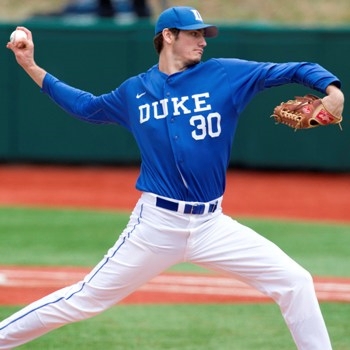
Michael Matuella
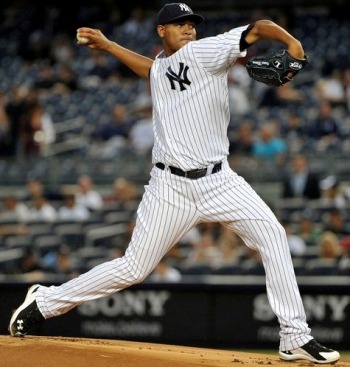
Ivan Nova
The (Natural) Alternative
What's the alternative to Premature Pronation?
It's to do what most ballplayers do naturally...
- For right-handers, show the ball to third base.
- For left-handers, show the ball to first base.

Ivan Nova and Mariano Rivera
That's what Mariano Rivera did and it's what Ivan Nova needs to do if he wants his elbow -- and his shoulder -- to hold up.
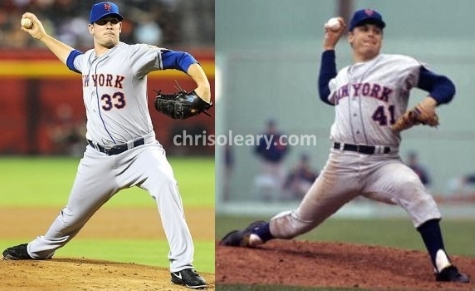
Matt Harvey vs. Tom Seaver
A similar, easily visible difference between Matt Harvey's pitching mechanics and Tom Seaver's is what caused Matt Harvey's elbow injury and will likely get his shoulder next.
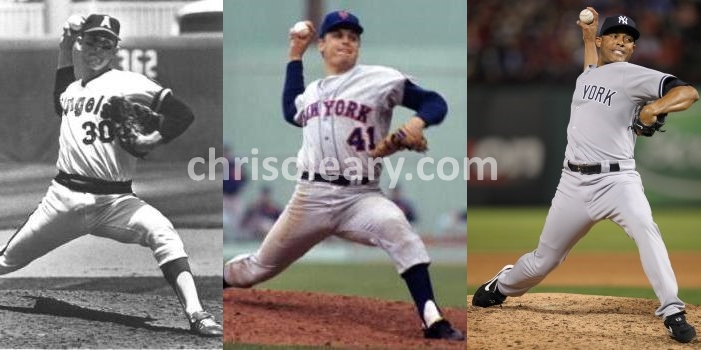
Nolan Ryan, Tom Seaver, and Mariano Rivera
All of this is disheartening and frustrating, given that it's obviously not what great pitchers (actually) do.
The History of the Cue
I discuss what I believe is the history of this cue in Pitching MRSA.
The Logic Behind my Concerns
The idea that the elbow is protected, and some of the load is taken off the UCL, by muscles of the forearm is based on reports like the one below...
Pitchers who had non-specified forearm strains before needing Tommy John surgery include...
Pitchers who have had forearm strains but haven't yet needed Tommy John surgery include...
- Wade Davis
- Sonny Gray
- Jesse Hahn
- Masahiro Tanaka
The general logic is, if the UCL starts to tear, it will transfer some of the load that it was carrying to the muscle that was carrying the next-largest load, straining it.
Relevant Research
I discuss all the relevant research in The Science Behind the Epidemic, but a particularly important study is...